Food and Wine Pairing Tips to Elevate Your Next Dinner Party
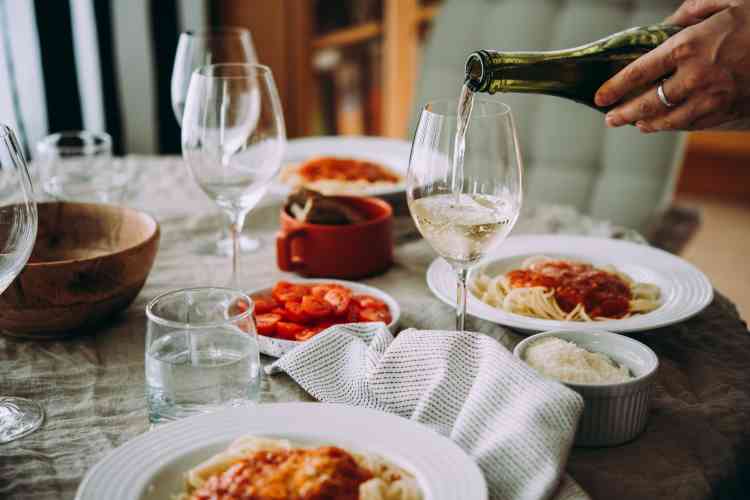
Choosing food and wine pairings is exciting, but it’s easy to feel overwhelmed when you look over your dinner menu. There are basic rules of thumb to guide you, like serving red wine with red meat and white with chicken and seafood, but there is so much more to pairing wine with food than this old adage.
What do you focus on when making the decision of how to pair wine with food? Food and wine pairings are based on the flavor profiles of the dishes and the wines and how the two interact. There are a lot of variables, but there’s one important thing to keep in mind: Deciding what wine goes with what food should be fun, so don’t stress too much!
Below, we outline the easiest ways to learn how to pair wine with food. It’s time to kick your next dinner party up a notch.
Jump to Section
Getting Started With Wine Pairings
The most important thing to remember when getting started with food and wine pairings is to have fun. Choose a type of wine that you like to drink and study its characteristics. When you take a sip of wine, or attend a class like a virtual wine tasting, pay attention to how it feels in your mouth. Is it a crisp and light white, a deep and fruity red or something on the sweet side?
The major taste component of white, rosé and sparkling wines is acidity. They have a tart flavor. Bitterness is the dominant taste in red wines and sweet wines are, well, sweet.
Another aspect of food and wine pairing to consider is the mouthfeel of the wine — does the wine feel light or heavy in your mouth? The sweetness or dryness of the wine is another factor. Once you find a wine you like, you can look at the flavor profiles of food to pair with it.
The basic tastes present in food are salt, acid, sweet, bitter, fat and spice (also known as piquant). Every food has these six flavors in some amount and you can use the dominant tastes in a dish to decide which wine to pair with what food, whether you're planning dessert, steak or wine and cheese pairings.
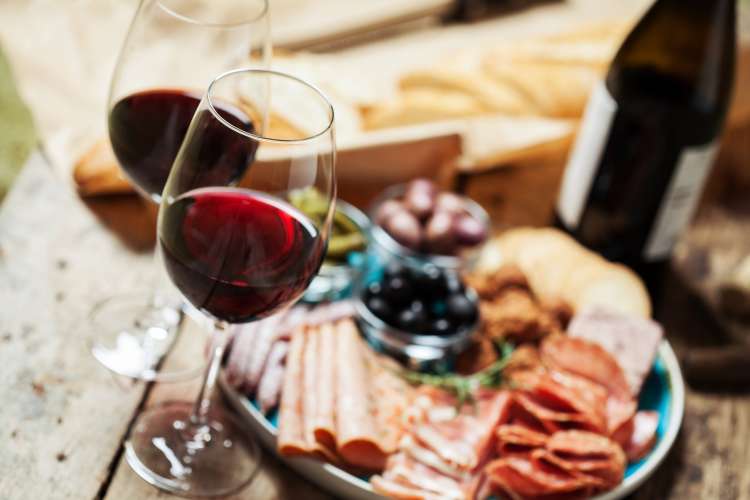
Food and Wine Pairing Types
Flavor profiles are important when deciding what wine goes with what food. Foods can have many flavors, but there will be one or two that are more noticeable than the others.
For example, the dominant flavor in red meat tends to be fat, although there can be spice, too, depending on how the meat is prepared. Seafood is often prepared with citrus, so the dominant note is acid, while in some vegetable dishes bitter is the most noticeable component. Snacks and fried foods are usually salty, although fat can come through as well. Sugary foods, such as cakes and tarts, are predominantly sweet.
Wines have flavor profiles, too, although they don’t have as many categories as food. Wines can be acidic, bitter or sweet and this is important for food and wine pairings. Some wines have strong fruit flavors. White wines tend to have light notes, such as pear, lemon or melon. Reds have stronger, deeper tones, such as cherries, plums, blackberries or currants.
Once you have determined the dominant flavors and how strong they are, you are ready to look at congruent and complementary food and wine pairings.

Congruent Wine Pairings
Congruent means to be in agreement, so in a congruent pairing, the food and wine share dominant tastes.
Acidic wines go with light, acidic foods and full-bodied wines with a bitter note go with rich dishes. A light pinot grigio served with a lemony seafood dish would be a congruent pairing because the wine is acidic and so is the food. Meanwhile, a hearty beef stew would go well with a robust red wine. The idea is for the similar flavors to blend together in concert.

Complementary Wine Pairings
On the other hand, complementary (or contrasting) pairings are based on food and wine pairings that share no compounds or flavor profiles, but instead, complement each other. The flavors in each are balanced by their contrasting elements.
One example of contrast is to pair sweet wine with a spicy dish. The sugar in the wine mellows the spiciness in the food. Another classic complementary pairing is an acidic wine with a fatty cut of meat. Research published in Current Biology confirms that an astringent, acidic wine creates a contrasting mouthfeel in conjunction with fatty meat dishes, creating a pleasing sensory experience.
Balance is important in complementary food and wine pairings. The food shouldn’t overpower the wine.
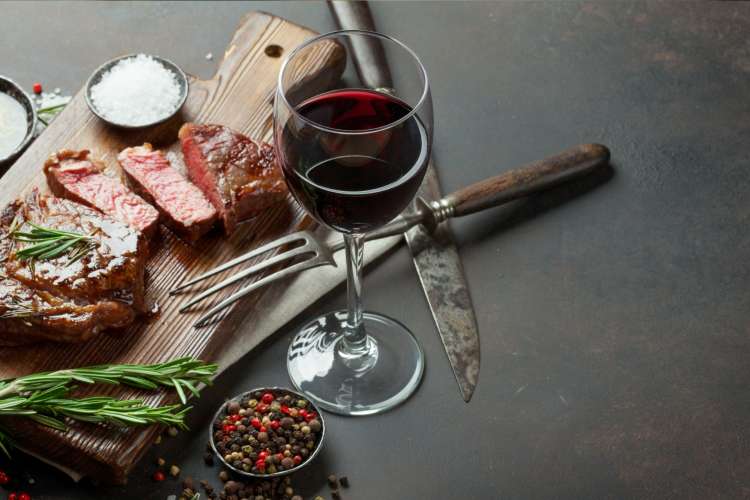
Food and Wine Pairing Rules of Thumb
In general, dishes with strong flavors pair well with red wine, and those with delicate flavors work best with white.
The age-old “red with red and white with white” rule works in many food and wine pairings, but it is an over-simplification and has plenty of exceptions. Red wine pairings often bring to mind a tannin-rich cabernet sauvignon with red meat, but another red wine pairing could be an earthy pinot noir with fatty seafood because reds mesh so well with fat.
Whites like sauvignon blanc and pinot grigio are light, crisp wines that go well with seafood, cheese or pasta with a tangy sauce. But an oaky chardonnay can stand up to slightly more robust dishes, while the slight sweetness of riesling pairs well with spicy dishes.
And what about vegetables? A white wine pairing is usually best with a vegetarian or vegan meal, but mushrooms have a strong flavor, so a bold red would work well there. Also, if there is a strongly flavored sauce, focus on that for your wine pairing instead of the flavors of the vegetables. Whatever flavor is dominant in the dish is the one you should focus on for food and wine pairings.
A good rule of thumb for deciding what wine goes with what food is to start with a wine that you like and try it with different foods, or start with a favorite dish and try it with different wines. This will help you develop a sense of taste combinations that you like and give you more confidence in what can be an intimidating journey.
Having some rules to follow makes the process of figuring out what wine goes with what food a bit easier, so here are some suggestions.

Red Wine With Red Meat
This classic combination works well because the flavors in red meat are so strong that you need a powerful wine to match them. The dominant flavor in steak or roasts is fat, which pairs well with red wine because the tannins soften the protein and let the fat flavor come through. That's why the best wines with steak and best lamb wine pairings are typically red.
White Wine With Chicken and Seafood
The reasoning here is that the acidity in white wine will enhance the flavor of mild meats. “White with light” usually works as a complementary food and wine pairing. For heartier cuts of fish, such as wine pairings with salmon, there can be more nuance.
Sweet Wines Go Best With Sweet Foods
This congruent food and wine pairing focuses on the dominant flavor in the dish, so serve a sweet wine with the dessert course.
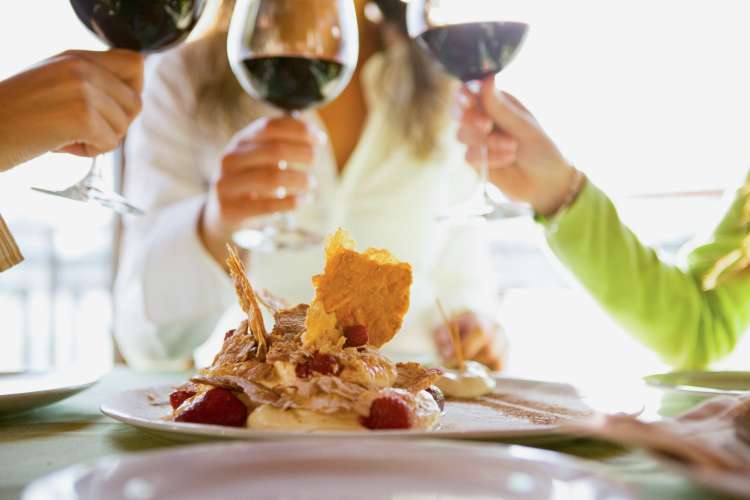
Pair the Wine With the Sauce
If a dish has a strong sauce, it is best to pair the wine to the flavor of the sauce rather than the meat or vegetables. A classic combination here is chianti with tomato-based pasta sauce.
White Wine Goes With Spicy Dishes
Choosing a wine to pair with spicy Asian or Mexican dishes can be tricky, but serving an acidic white with a bit of sweetness to it will blend well with the heat and also help tone it down a bit. A wine with a low alcohol content is best here and white wines tend to be lower in alcohol than red wines. Higher alcohol content in the wine can increase the spice level in the food.
Champagne Goes With Everything
Sparkling wines are very versatile and can be paired with many dishes. You can even pair sparkling wines with fried foods. The carbonation cuts through the saltiness and balances the flavor of the fat, which is another reason that beer is a popular option with fried food. Let’s face it: Sparkling wines turn everything into a celebration!
Drink What You Like
This is the most important rule of food and wine pairings. If you don’t like the wine, you won’t enjoy the pairing.
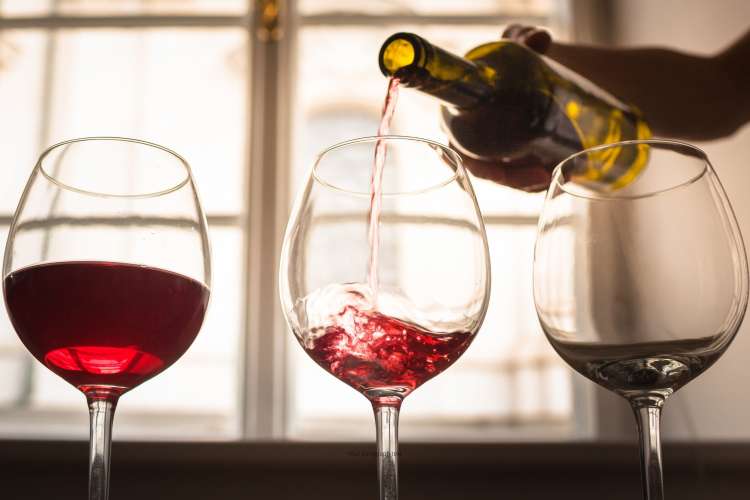
By following a few rules, you can navigate the waters of food and wine pairings easily. Pay attention to the dominant flavors in the dishes and the wines, and don’t be afraid to go beyond the “red with red and white with light” rule of thumb. The most important thing when deciding how to pair wine with food is to have fun!
For even more inspiration with food and wine pairings, check out other experiences happening on Cozymeal.


